| Conferences > Stem Cells and Antibodies in Drug Discovery Europe 2018 > Keynote Speakers |
| Register | Login |
Matthew DanielsWellcome Trust Intermediate Clinical Fellow, Honorary Consultant Cardiologist, University of Oxford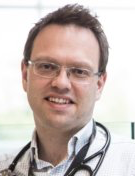 Matthew is an academic cardiologist currently supported by the Wellcome Trust to develop iPS models of inherited human heart disease and better ways to study them at the University of Oxford, UK. While enrolled on the Astra-Zeneca funded MB-PhD program at the University of Cambridge he developed an interest in live cell imaging and fluorescent protein technology, enabling the first observation of failure of cytokinesis causing aneuploidy in inherited human cancer (Daniels et al, Science, 2004, 306, 876-9). He then went on to train in clinical cardiology developing an internationally recognised practice in structural intervention and inherited cardiac conditions. His academic activity is currently focused on development and application of genetically encoded tools to study excitable cells, improving how these platforms can be used for rare disease drug discovery and toxicology evaluation. His career aim is to develop cell based repair of the human heart using percutaneous intracardiac devices to carry cells to the site of repair. |
Stefan DubelFull Professor and Director, Technische Universität Braunschweig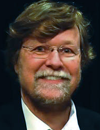 Dr. Stefan Dübel is full Professor of Biotechnology and Director of the respective department at the Technische Universität Braunschweig, Germany (http://www.bbt.tu-bs.de/Biotech). He further serves as director of the technology transfer unit "Centre for Molecular Engineering" of iTUBSmbH and as consultant to biotech / pharma companies and US/EU goverment institutions. He initiated the "Antibody factory" of the German National Gemome Research Network and is editor of the four volume "Handbook of Therapeutic Antibodies" and other antibody engineering books. He is co-founder of several biotech companies, most recently of the human antibody discovery and antibody engineering company Yumab GmbH (www.yumab.com). |
Paul FrenchProfessor, Department of Physics and Photonics Group, Imperial College London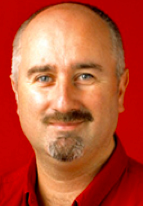 Professor Paul French received his BSc (Hons) degree in physics in 1983 and his PhD in laser optics in 1987 from Imperial College, London. Since 1999 he has been a Professor in the Photonics Group of the Physics Department at Imperial College London, where he was a Royal Society University Research Fellow from 1989 until 1994 when he joined the academic staff, serving as Head of the Photonics Group from 2001-2013. He has also worked at the University of New Mexico (1988) and at AT&T Bell Laboratories, Holmdel, NJ (1990/91). His research has evolved from ultrafast dye and solid-state laser physics to biomedical optics with a particular emphasis on fluorescence lifetime imaging (FLIM) for applications in molecular cell biology, drug discovery and clinical diagnosis. His current portfolio includes the development and application of multidimensional fluorescence imaging technology for super-resolved microscopy, automated high content analysis, endoscopy and tomography, with open source approaches to image data acquisition and analysis. Biomedical applications include label-free imaging and metrology of tissue autofluorescence, automated multiwell plate FLIM and FRET of cell signaling processes and preclinical optical projection tomography and endomicroscopy. |
Gary GintantSenior Research Fellow, Abbvie.png) Dr. Gary Gintant is Senior Research Fellow in the Dept. of Integrative Pharmacology, Integrated Science and Technology, at AbbVie. He is involved in multiple internal drug discovery and safety initiatives internally; external activities include various cardiac safety initiatives (such as ILSI/HESI Proarrhythmia Models Project, the Cardiac Safety Research Consortium, and the Comprehensive in Vitro Proarrhythmia Assay Initiative) while serving on various journal editorial boards, NIH study sections, and Safety Pharmacology Society committees. Research interests include cardiovascular pharmacology, cellular electrophysiology/ion channels, arrhythmias, application of stem-cell derived cells and tissues to drug discovery efforts, and translational medicine. He gained his MA, M.Phil. and PhD degrees from the College of Physicians and Surgeons of Columbia University. |
David HayChair of Tissue Engineering, MRC Centre for Regenerative Medicine, University of Edinburgh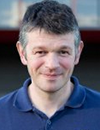 David is the Professor of Tissue Engineering at the University of Edinburgh. Dave has worked in the field of stem cell biology and differentiation for over fifteen years. He and his team have highlighted the important role that pluripotent stem cells have to play in modelling human liver biology ‘in the dish’ and supporting failing liver function in vivo. The impact of this work has led to a number of peer-reviewed publications (>100), regular appearances at high profile conferences, and three start-up companies. |
Stephen HelliwellSenior Investigator, Novartis Institutes for BioMedical Research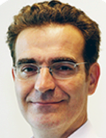 Stephen Helliwell received his BSc Honours in Biochemistry from the University of Kent in 1992. During his PhD in Biochemistry (1996) at the Biozentrum, University of Basel, he identified one of the targets (Tor1p) of the anticancer drug rapamycin (Afinitor). Following a short Post-Doctoral stay at the University of Bern, he moved to the Department of Biology at MIT as a Post-Doctoral Fellow. There he discovered novel ubiquitination factors controlling Golgi-to-endosome sorting of membrane proteins, and continued this research at the Biozentrum, University of Basel from 2002 to 2005. He joined the Novartis Institutes of BioMedical Research in 2005. After 6 years focusing on small molecule target identification using chemogenomic profiling, he is now leading projects to treat disorders caused by defective mitochondrial metabolism, with a focus on liver dysfunction. He continues to lecture at the Biozentrum, University of Basel. |
Robert WilliamsChief Drug Development Scientist, Cancer Research UK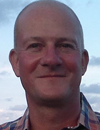 Dr Robert Williams is currently Chief Drug Development Scientist at Cancer Research UK’s Centre for Drug Development leading the scientific and medical teams that support a large portfolio of drug development projects including small molecules, antibodies, cell and gene therapies. Rob also has management responsibility for the CRUK-MedImmune antibody discovery laboratory in Cambridge. He has a PhD in pharmacology from Aston University and spent his early career in the pharmaceutical industry working for Glaxo and Rhone-Poulenc Rorer in drug discovery, heading up teams in the metabolic and inflammatory disease areas. He then worked in the biotech sector for several years including a spell with Prolifix where he was responsible for the preclinical development of Beleodaq, a histone deacetylase inhibitor now approved for the treatment of peripheral T-cell lymphoma. |




